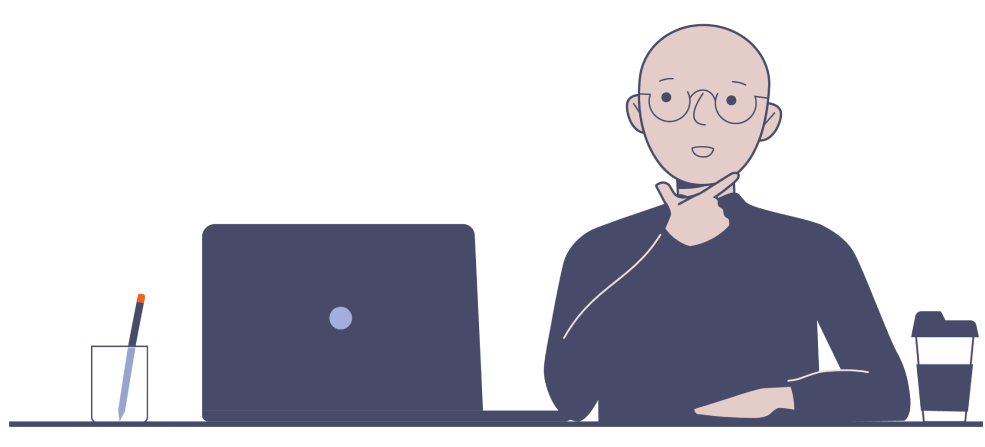
Case Study: Building Support Systems at St Luke's
Resources|18th November 2022

Deputy Headteacher - St Luke's C of E School
What systems can help staff to prioritise coaching? With this in mind, I considered what measures I could put in place to maximise the completion in order that coaching could have the greatest possible impact.
Introduction from Josh
To achieve the desired impact from an Instructional Coaching programme, schools need to get two things right: first, schools need to ensure that coaches are skilled in their jobs, that they are helping teachers work towards high-quality, evidence based teaching goals, and delivering feedback that helps move teachers forwards. It is the second, though, that is often an even bigger challenge for school leaders: if coaching observations aren’t even taking place, then nobody will be getting better. Put simply, schools need to aim for a high-completion rate of coaching observations and feedback meetings if they want teachers to get better.
On Steplab, we help school leaders measure these completion rates so that leaders can make educated decisions about how to improve their coaching programmes. This year - and despite the many challenges that COVID brought - one school jumped out as have the highest coaching completion rates in the country: St Lukes C of E school, part of the Ted Wragg Trust.
While many schools - due to staff absence issues and other related challenges - were struggling to get their completion rates up to 40 and 50%, St Lukes regularly managed to get these to 70 and 80%, and sometimes even higher. This would’ve been a major challenge before the pandemic, but these numbers truly signal that something special is happening at St Lukes. We asked Alex Evans, Assistant Principal for T&L what he did to make this happen. Alex kindly wrote the below blog to answer the question. We hope you find it useful.
St Lukes
The context at St Lukes One year after starting to implement a coaching programme, the impact on the quality of teaching and learning in my school was visible. Seeing this impact my Headteacher said, “I need people to value coaching as much as they value lessons. Teachers would never miss a lesson, yet sometimes coaching gets pushed aside because people are too busy; coaching needs to be something which is never missed”.
Coaching at St Lukes got off to a great start. Firstly, staff did value access to coaching really highly: I’d recently surveyed staff and after our first year of having a coaching programme and 100% of staff had said so. I also knew I had a team of coaches completely committed to supporting staff and improving the quality of teaching and learning.
It’s not everyone that is in the position of having a willing coaching team, a supportive Headteacher and staff who highly value access to regular coaching. However, as everyone is aware, schools are incredibly busy places and school days are incredibly reactive for teachers and leaders; no two days in school are ever really alike.
What systems can help staff to prioritise coaching? With this in mind, I considered what measures I could put in place to maximise the completion in order that coaching could have the greatest possible impact.
1. Allocating time
Firstly, both coaches and staff needed to be allocated time to coach and be coached. We found it essential to provide this time to staff so that people could really concentrate on the process of coaching and getting better without other distractions creeping in. All staff teach one lesson less than their allocation in order that they can receive feedback every week and equally coaches are allocated time to observe and give feedback.
2. Continuous messaging
The second consideration was about communication. Firstly, to the staff body and secondly to the coaching team. The key messages to staff were that coaching is about development not evaluation: every single member of staff from ECTs, to the Senior Leadership team are coached weekly. I shared the financial and time investment the school was making in every member of staff in order that they could improve because, as Dylan Wiliam states, “every teacher needs to improve, not because they are not good enough, but because they can be even better.”
After communicating with staff it was important to also get the message right to the coaching team. The following quote from Paul Bambrick-Santoyo was used to explain this: “walk the halls in the best schools in the world, and an indisputable pattern emerges: the difference between a good school and a great school is not seen in the strongest teachers; there are strong teachers in nearly every school. Instead, the gap can be found in the difference between the strongest teacher and the weakest one. If your strongest teacher is an island, then the rest are as well, stranded from the resource that could make them better. But if teachers across the school learn and replicate what’s working in the strongest teachers’ classrooms, you’ve built bridges between those islands and everyone’s students will thrive”.
This explained why they were the right people to coach and their purpose as coaches. I then needed to ensure we had a shared purpose and responsibility to ensure coaching completion was maximised in order to get improvements. For this, I shared the cost of coaching. Coaching, for all its incredible benefits, and it’s been one of the biggest factors in my school’s journey of huge improvement and in my opinion completely worth it, is expensive. Especially if you allocate adequate time to it. If you tally all the time spent on coaching across the year and calculate how much staff’s time cost then you can imagine the figure. I spoke about our responsibility regarding this. The school had made a massive investment of our student’s money in coaching and it was therefore our responsibility to ensure coaching had the desired impact. Especially as we know that quality of teaching has the biggest impact on our most disadvantaged students who in the classrooms of the best teachers learn at the rate of their advantaged peers.
3. Setting the schedule in stone
These messages were well received by staff but we needed to do more. It’s one thing to get people on board, but I knew action was needed to get coaching thriving every week. This was a particular challenge because COVID was so prominent in our school that we regularly had several staff absent each day and often no cover teachers available. How could we help to raise the priority of coaching so that it equalled the status of teaching our students?
Our answer was inspired by my Headteacher’s challenge of helping coaches to value their feedback in the same way that they value their teaching. The reason lessons are not missed is because they are timetabled: staff are expected to be in a set place at a set time. I knew I needed to replicate this for coaching.
To do this, after the school’s timetable was confirmed I created a selection timetable with every member of staff in our school and ensured that every coach could observe their coachee a few times per week, with an additional timetabled lesson for weekly feedback. This was protected on their timetables and meant that staff couldn’t be called for cover during the time their coaching meetings were meant to happen. In addition to timetabling coaching, I also wanted to make sure there was always a place where coaching meetings could take place. We now have a coaching room, dedicated to teaching and learning to ensure that teachers and their coaches have a quiet space, specifically dedicated to the idea of getting better.
The expectation is that the meeting takes place in this room at a set time, meaning that if a meeting is going to be missed, emails have to be sent and plans rearranged. This ensures the meeting isn’t notional or something which needs to be re-planned each week by a busy teacher. We found that it hugely increased the frequency of coaching that took place.
4. Step in when needed
While time for coaching observations was protected, with high numbers of staff absence and the natural unpredictability of schools, things could still go amiss. As a contingency plan there was also the offer that coaches could email me and I’d cover the observation. I would drop-in and film so that the feedback could still take place.
Conclusion
We’re really proud of building a coaching programme where staff really have the space to prioritise getting better, but we want to make it better still. We’re already considering additional strategies we can implement in the future, such as buying cameras for departments to film specific elements of lessons when their coach can’t visit at that time or is absent. However, as absence returns to normal levels we’re expecting our coaching programme to naturally improve. The key thing we’ve learned from this is that to make coaching truly prioritised and valued by staff, we need to help them to see that coaching is as important a part of teachers’ jobs as their classroom teaching.


